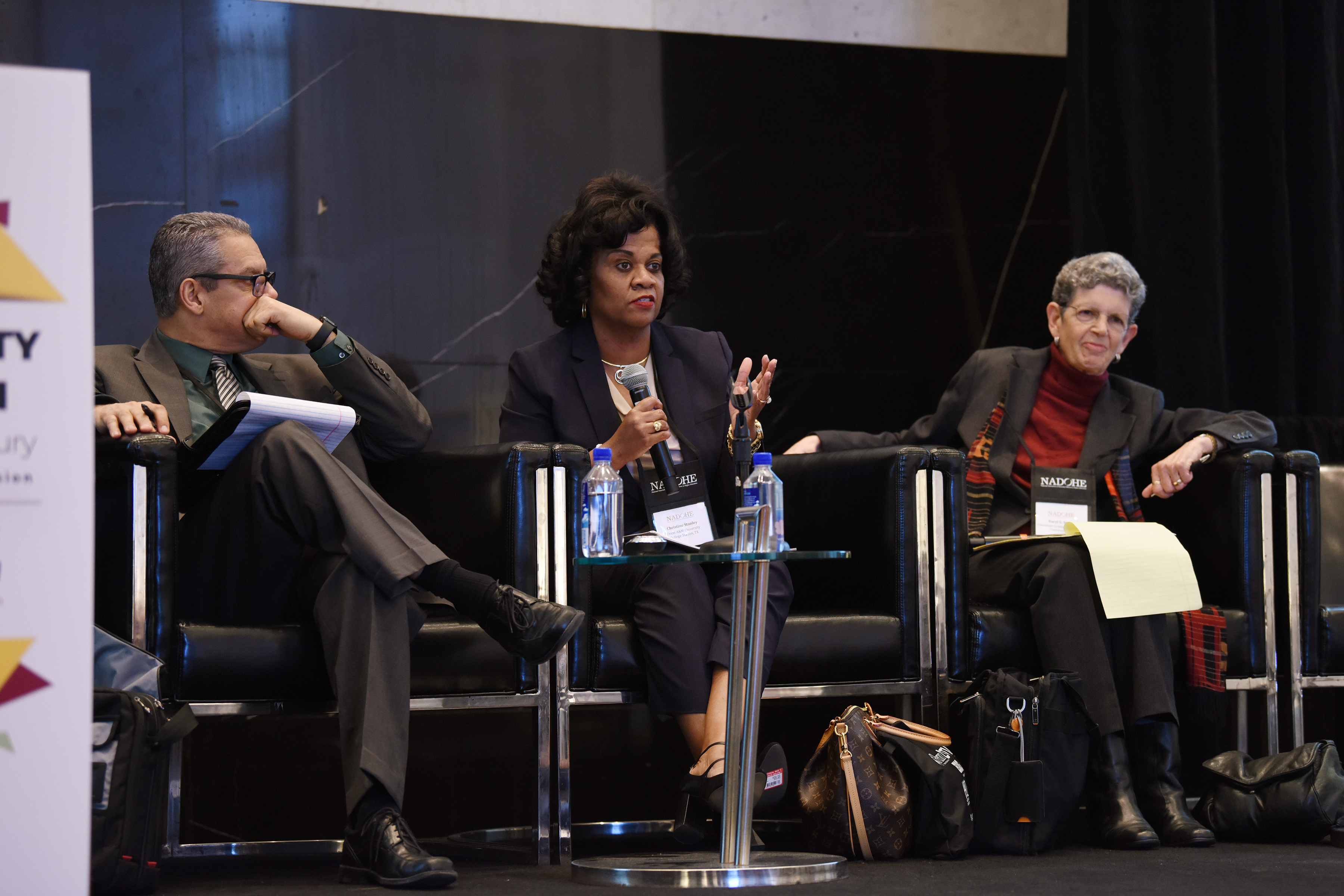|
National Association of Diversity Officers in Higher Education
Standards of Professional Practice for Chief Diversity Officers 2.0* (*The Standards of Professional Practice for Chief Diversity Officers are the exclusive property of NADOHE and may not be copied or reproduced in any format without NADOHE’s prior written permission.)

National Association of Diversity Officers in Higher Education
March 2020 Task Force: Roger L. Worthington, PhD, Chair, Christine A. Stanley, PhD, Daryl G. Smith, PhD Executive SummaryThe National Association of Diversity Officers in Higher Education (NADOHE) has established standards of professional practice for chief[*] diversity officers (CDOs) in higher education. Given the complexities of differing institutional types, missions, historical legacies, and current contexts and the varied professional backgrounds and trajectories of CDOs, institutions will inevitably differ in the details of the application of these standards in terms of critical features including, but not limited to, (a) the organizational structure in the portfolio of the CDO, (b) the allocation of human, fiscal, and physical resources, (c) the optimal degree of centralization versus decentralization of equity, diversity, and inclusion (EDI) efforts, (d) the processes of building institutional and organizational capacity, (e) the unique organizational manifestations of institutional change, and (f) the specific focus and metrics related to mechanisms of accountability. CDOs play the central administrative role in guiding, facilitating, and evaluating these processes on behalf of the institution (Williams & Wade-Golden, 2007, 2013). The highest levels of commitment, responsibility, and accountability reside throughout institutional leadership, in which cabinet-level CDOs serve as the principal administrators to advance mission-driven efforts through highly specialized knowledge and expertise. Through the standards of professional practice that follow, NADOHE provides guidance and support to individuals serving as CDOs, as well as to the institutions where they work. Standard One: Chief diversity officers have ethical, legal, and practical obligations to frame their work from comprehensive definitions of equity, diversity, and inclusion—definitions that are inclusive with respect to a wide range of identities, differentiated in terms of how they address unique identity issues and complex in terms of intersectionality and context. Standard Two: Chief diversity officers work to ensure that elements of equity, diversity, and inclusion are embedded as imperatives in the institutional mission, vision, and strategic plan. Standard Three: Chief diversity officers are committed to planning, catalyzing, facilitating, and evaluating processes of institutional and organizational change. Standard Four:Chief diversity officers work with senior campus administrators and, when appropriate, governing bodies (e.g., trustees or regents) to revise or remove the embedded institutional policies, procedures, and norms that create differential structural barriers to the access and success of students, faculty, and staff who belong to marginalized and oppressed groups. Standard Five: Chief diversity officers work with faculty, staff, students, and appropriate institutional governance structures to promote inclusive excellence in teaching and learning across the curriculum and within cocurricular programming. Standard Six: Chief diversity officers work within a community of scholars to advocate for inclusive excellence in research, creativity, and scholarship in all fields as fundamental to the mission-driven work of the institution. Standard Seven: Chief diversity officers are committed to drawing from existing scholarship and using evidence-based practices to provide intellectual leadership in advancing equity, diversity, and inclusion. Standard Eight: Chief diversity officers work collaboratively with senior campus administrators to plan and develop the infrastructure for equity, diversity, and inclusion to meet the needs of the campus community. Standard Nine: Chief diversity officers strive to optimize the balance between centralization and decentralization of efforts to achieve equity, diversity, and inclusion throughout the institution. Standard Ten: Chief diversity officers work with senior administrators and members of the campus community to assess, plan, and build institutional capacity for equity, diversity, and inclusion. Standard Eleven: Chief diversity officers work to ensure that institutions conduct periodic campus climate assessments to illuminate strengths, challenges, and gaps in the development and advancement of an equitable, inclusive climate for diversity. Standard Twelve: Chief diversity officers work with senior administrators and campus professionals to develop, facilitate, respond to, and assess campus protocols that address hate‑bias incidents, including efforts related to prevention, education, and intervention. Standard Thirteen: Chief diversity officers work with senior administrators and campus professionals to facilitate and assess efforts to mentor, educate, and respond to campus activism, protests, and demonstrations about issues of equity, diversity, and inclusion. Standard Fourteen: Chief diversity officers are committed to accountability for advancing equity, diversity, and inclusion throughout the institution. Standard Fifteen: Chief diversity officers work closely with senior administrators to ensure full implementation of and compliance with the legal and regulatory requirements for the institution. Standard Sixteen: Chief diversity officers engage in their work in ways that reflect the highest levels of ethical practice, pursuing self-regulation as higher education professionals.
ReferencesWilliams, D. A., & Wade-Golden, K. (2007). The chief diversity officer: A primer for college and university presidents (Occasional paper, 3rd in a series). Washington, DC: American Council on Education.
Williams, D. A., & Wade-Golden, K. (2013). The chief diversity officer: Strategy, structure, and change management. Sterling, VA: Stylus.
|
